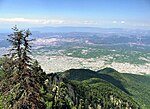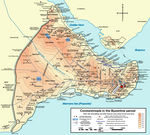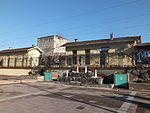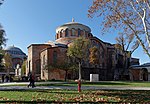Eurasia Tunnel

The Eurasia Tunnel (Turkish: Avrasya Tüneli) is a road tunnel in Istanbul, Turkey, crossing underneath the Bosphorus strait. The tunnel was officially opened on 20 December 2016 and opened to traffic on 22 December 2016. The 5.4 km (3.4 mi) double-deck tunnel connects Kumkapı on the European part and Koşuyolu, Kadıköy, on the Asian part of Istanbul with a 14.6 km (9.1 mi) route including the tunnel approach roads. It crosses the Bosphorus beneath the seabed at a maximum depth of −106 m (348 ft). It is about 1 km (0.62 mi) south of the undersea railway tunnel Marmaray, which was opened on 29 October 2013. The journey between the two continents takes about 5 minutes. Toll is collected in both directions; since February 2020, ₺36.40 (about $4 US) for cars and ₺54.70 ($6 US) for minibuses. In February 2021 the toll increased by 26% to ₺46 (approx. $6.20) and ₺69 (~$9.30) respectively.
Excerpt from the Wikipedia article Eurasia Tunnel (License: CC BY-SA 3.0, Authors, Images).Eurasia Tunnel
Eurasia Tunnel, Istanbul
Geographical coordinates (GPS) Address External links Nearby Places Show on map
Geographical coordinates (GPS)
| Latitude | Longitude |
|---|---|
| N 41.004722222222 ° | E 28.994722222222 ° |
Address
Avrasya Tüneli
Eurasia Tunnel
34122 Istanbul
Türkiye
Open on Google Maps









